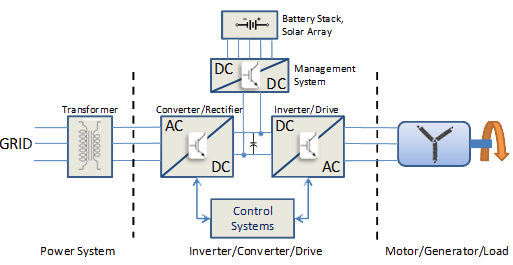Date
08/10/2012
The new NI (National Instruments) single-board RIO (reconfigurable I/O) GPIC (General Purpose Inverter Controller) enables a new embedded-system-design approach for rapid deployment of advanced, field-reconfigurable, digital energy-conversion systems. The high-level graphical system-design platform and standard RIO FPGA-based control system facilitates companies to in-source their designs, without any knowledge of register level languages such as Verilog and VHDL. Continuous growth in the efficiency of electric power switching devices, as with IGBTs and MOSFETs , combined with accelerated performance and in transistor price improvements, have ensured a rapid increase in energy-efficient power conversion systems for traditional and renewable energy sources. This increase in efficiency requirements has forced power-system designers to use power devices and sophisticated control-system concepts that tax traditional design and analysis tools and techniques. The NI single-board RIO GPIC provides a standard RIO architecture for smart, grid-tied power-conversion systems with a comprehensive NI LabVIEW system-design tool chain that significantly reduces the cost and risk of embedded-system design.

The product reflects the ongoing investments by NI R&D to revolutionise design, testing, and large-scale deployment of new digital energy-conversion systems. The new system provides a standard set of analog and digital I/O and 58 DSP cores embedded in the FPGA fabric to meet the specific control, I/O, performance, and cost needs of most smart-grid power-electronics applications, including DC-AC, AC-DC, DC-DC and AC-AC converters for flexible AC transmission systems, renewable energy generation, energy storage, and variable-speed drives. "NI programming tools actually allow engineers to program the control strategy at the FPGA level, which is the clear path for the future," said Dr. Bill Kramer, acting R&D manager for energy systems integration technology at US DOE's NREL (National Renewable Energy Laboratory). "Imagine yourself being able to write multiple control strategies that run in parallel to create new power electronics designs than can be reconfigured at the hardware level after years of deployment on the grid." NI Single-Board RIO GPIC Features: